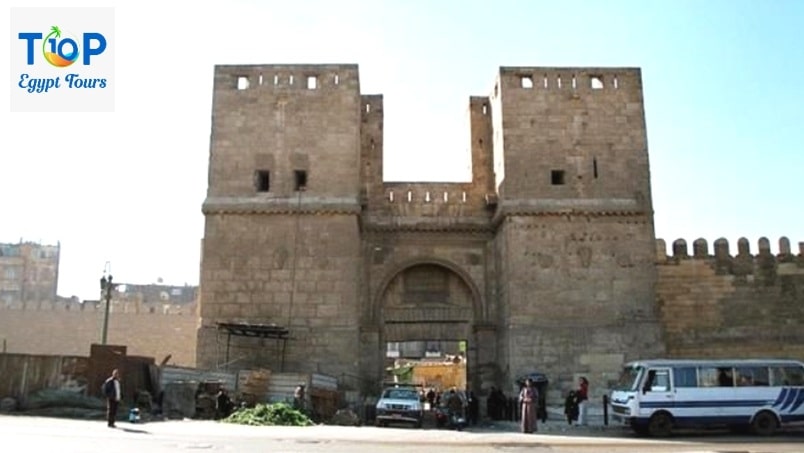Bab Al-Nasr, or the Gate of Victory, is one of the most iconic landmarks in Cairo, Egypt. It is one of the three remaining monumental gates of the city walls, built during the Fatimid dynasty in the 11th century. Bab Al-Nasr is a stunning example of Fatimid architecture, with its towering minarets, intricate carvings, and geometric patterns. It is also a significant historical site, having witnessed many of Cairo’s most important events over the centuries.
In this article, we will uncover for you the Bab Al-Nasr with Top Ten Egypt.
Historical Context: The Fatimid Dynasty
The Fatimid dynasty was a powerful Islamic dynasty that ruled over much of North Africa and the Middle East from the 10th to the 12th centuries. The Fatimids were great patrons of the arts and architecture, and they commissioned many of Cairo’s most iconic landmarks, including Bab Al-Nasr.
Fatimid caliph Al-Mustansir Billah built Bab Al-Nasr in 1092. It was one of the main entrances to the city, and it was used by victorious armies returning from battle. The gate was also a symbol of the Fatimid dynasty’s power and prestige.
Architectural Marvel Of Bab Al-Nasr: A Blend of Styles
It is a masterpiece of Fatimid architecture. It is a rectangular gatehouse with two towering minarets. The gatehouse is decorated with intricate carvings and geometric patterns. The minarets are decorated with spiraled bands and muqarnas, a type of Islamic honeycomb ornament.
The gatehouse is flanked by two towers, which were used for defense. The towers are connected to the gatehouse by a bridge. The bridge is decorated with a series of arches and columns.
Cultural Significance: A Symbol of Victory and Power
It is a significant cultural landmark in Cairo. It is a symbol of the city’s rich history and Islamic heritage. The gate is also a popular tourist destination, attracting visitors from all over the world.
Bab Al-Nasr is also a place of great cultural significance. It is a popular spot for locals to gather and socialize. The gate is also used for cultural events, such as concerts and festivals.
Exploring Bab Al-Nasr
Visiting Bab Al-Nasr is a must for anyone interested in Cairo’s history, culture, and architecture. The gate is open to the public, and visitors can climb to the top of the minarets for stunning views of the city.
To reach Bab Al-Nasr, visitors can take a taxi or public transportation. The gate is located in the Al-Gamaleya district of Cairo, near the Khan El-Khalili market.
Conclusion
Bab Al-Nasr is a historical jewel of Cairo. It is a stunning example of Fatimid architecture and a significant cultural landmark. Visitors to Cairo should not miss the opportunity to explore this iconic gatehouse and learn about its rich history.



Comment (0)